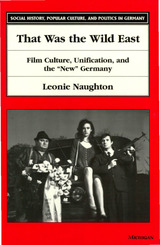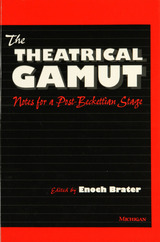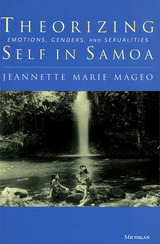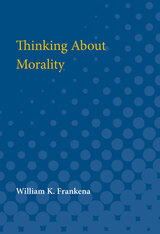7 books about Authors, Japanese
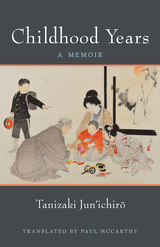
Childhood Years
A Memoir
Tanizaki Jun'ichiro; Translated by Paul McCarthy
University of Michigan Press, 2017
In Childhood Years, originally published serially in a literary magazine between 1955 and 1956, Tanizaki Jun’ichirō (1886–1965) takes a meandering look back on his early life in Tokyo. He reflects on his upbringing, family, and the capital city with a conversational—and not necessarily honest—eye, offering insights into his later life and his writing.
[more]
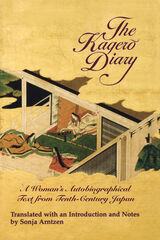
The Kagero Diary
A Woman’s Autobiographical Text from Tenth-Century Japan
Translated with an Introduction and Notes by Sonja Arntzen
University of Michigan Press, 1997
Japan is the only country in the world where women writers laid the foundations of classical literature. The Kagerō Diary commands our attention as the first extant work of that rich and brilliant tradition. The author, known to posterity as Michitsuna’s Mother, a member of the middle-ranking aristocracy of the Heian period (794–1185), wrote an account of 20 years of her life (from 954–74), and this autobiographical text now gives readers access to a woman’s experience of a thousand years ago.
The diary centers on the author’s relationship with her husband, Fujiwara Kaneie, her kinsman from a more powerful and prestigious branch of the family than her own. Their marriage ended in divorce, and one of the author’s intentions seems to have been to write an anti-romance, one that could be subtitled, “I married the prince but we did not live happily ever after.” Yet, particularly in the first part of the diary, Michitsuna’s Mother is drawn to record those events and moments when the marriage did live up to a romantic ideal fostered by the Japanese tradition of love poetry. At the same time, she also seems to seek the freedom to live and write outside the romance myth and without a husband.
Since the author was by inclination and talent a poet and lived in a time when poetry was a part of everyday social intercourse, her account of her life is shaped by a lyrical consciousness. The poems she records are crystalline moments of awareness that vividly recall the past. This new translation of the Kagerō Diary conveys the long, fluid sentences, the complex polyphony of voices, and the floating temporality of the original. It also pays careful attention to the poems of the text, rendering as much as possible their complex imagery and open-ended quality. The translation is accompanied by running notes on facing pages and an introduction that places the work within the context of contemporary discussions regarding feminist literature and the genre of autobiography and provides detailed historical information and a description of the stylistic qualities of the text.
[more]

Mishima
A Vision of the Void
Maguerite Yourcenar
University of Chicago Press, 2001
On November 25, 1970, Japan's most renowned postwar novelist, Yukio Mishima, stunned the world by committing ritual suicide. Here, Marguerite Yourcenar, a brilliant reader of Mishima and a scholar with an eye for the cultural roles of fiction, unravels the author's life and politics: his affection for Western culture, his family and his homosexuality, his brilliant writings, and his carefully premeditated death.
[more]

Musashino in Tuscany
Japanese Overseas Travel Literature, 1860–1912
Susanna Fessler
University of Michigan Press, 2004
By the late Meiji period Japanese were venturing abroad in great numbers, and some of those who traveled kept diaries and wrote formal travelogues. These travelogues reflected a changing view of the West and changing artistic sensibilities in the long-standing Japanese literary tradition of travel writing (kikoōbungaku). This book shows that overseas Meiji-period travel writers struck out to create a dynamic new type of travel literature, one that had a solid foundation in traditional Japanese kikōbungaku yet also displayed influence from the West.
Musashino in Tuscany specifically examines the poetic imagery and allusion in these travelogues and reveals that when Japanese traveled to the West in the mid-nineteenth century, the images they wrote about tended to be associated not with places initially discovered by the Japanese traveler but with places that already existed in Western fame and lore. And unlike imagery from Japanese traveling in Japan, which was predominantly nature based, Japanese overseas travel imagery was often associated with the manmade world.
[more]
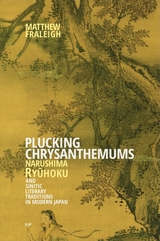
Plucking Chrysanthemums
Narushima Ryūhoku and Sinitic Literary Traditions in Modern Japan
Matthew Fraleigh
Harvard University Press, 2016
Plucking Chrysanthemums is a critical study of the life and works of Narushima Ryūhoku (1837–1884): Confucian scholar, world traveler, pioneering journalist, and irrepressible satirist. A major figure on the nineteenth-century Japanese cultural scene, Ryūhoku wrote works that were deeply rooted in classical Sinitic literary traditions. Sinitic poetry and prose enjoyed a central and prestigious place in Japan for nearly all of its history, and the act of composing it continued to offer modern Japanese literary figures the chance to incorporate themselves into a written tradition that transcended national borders. Adopting Ryūhoku’s multifarious invocations of Six Dynasties poet Tao Yuanming as an organizing motif, Matthew Fraleigh traces the disparate ways in which Ryūhoku drew upon the Sinitic textual heritage over the course of his career. The classical figure of this famed Chinese poet and the Sinitic tradition as a whole constituted a referential repository to be shaped, shifted, and variously spun to meet the emerging circumstances of the writer as well as his expressive aims. Plucking Chrysanthemums is the first book-length study of Ryūhoku in a Western language and also one of the first Western-language monographs to examine Sinitic poetry and prose (kanshibun) composition in modern Japan.
[more]

Remembering Tanizaki Jun’ichiro and Matsuko
Diary Entries, Interview Notes, and Letters, 1954-1989
Anthony H. Chambers
University of Michigan Press, 2017
Remembering Tanizaki Jun’ichirō and Matsuko provides previously unpublished memories, anecdotes, and insights into the lives, opinions, personalities, and writings of the great novelist Tanizaki Jun’ichirō (1886–1965) and his wife Matsuko (1903–1991), gleaned from the diaries of Edward Seidensticker and two decades of Anthony Chambers’s conversations with Mrs. Tanizaki and others who were close to the Tanizaki family.
[more]

The Similitude of Blossoms
A Critical Biography of Izumi Koyka (1873-1939), Japanese Novelist and Playwright
Charles Shiro Inouye
Harvard University Press, 1998
Izumi Kyoka (1872-1939) wrote some 300 stories, plays, and essays. In the first book-length study in English of Kyoka, Charles Shiro Inouye argues that his writings were a refinement of a vision that came into focus around 1900. This narrative archetype formed the aesthetic and ethical bases of his work. Kyoka does not fit the conventional story of Japanese literary modernization. Unlike most of his contemporaries, he did not jettison the Japanese literary tradition in favor of modernist imports from the West. The highly visual mode of figuration that was Kyoka's compromise with the demands of literary modernism allows us to see the continuation of Edo culture in the Japanese modern and expand our understanding of literary reform in the early twentieth century.
[more]
READERS
Browse our collection.
PUBLISHERS
See BiblioVault's publisher services.
STUDENT SERVICES
Files for college accessibility offices.
UChicago Accessibility Resources
home | accessibility | search | about | contact us
BiblioVault ® 2001 - 2025
The University of Chicago Press



